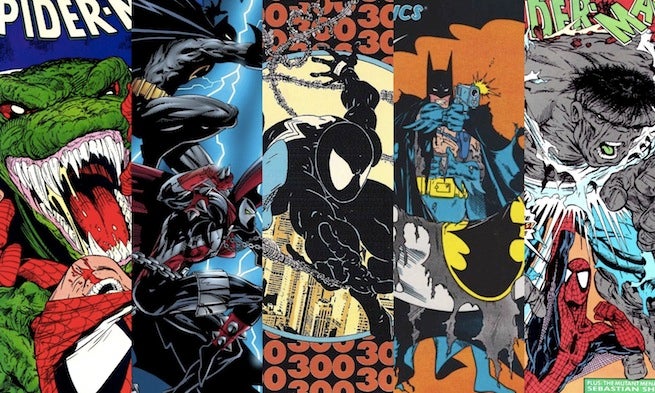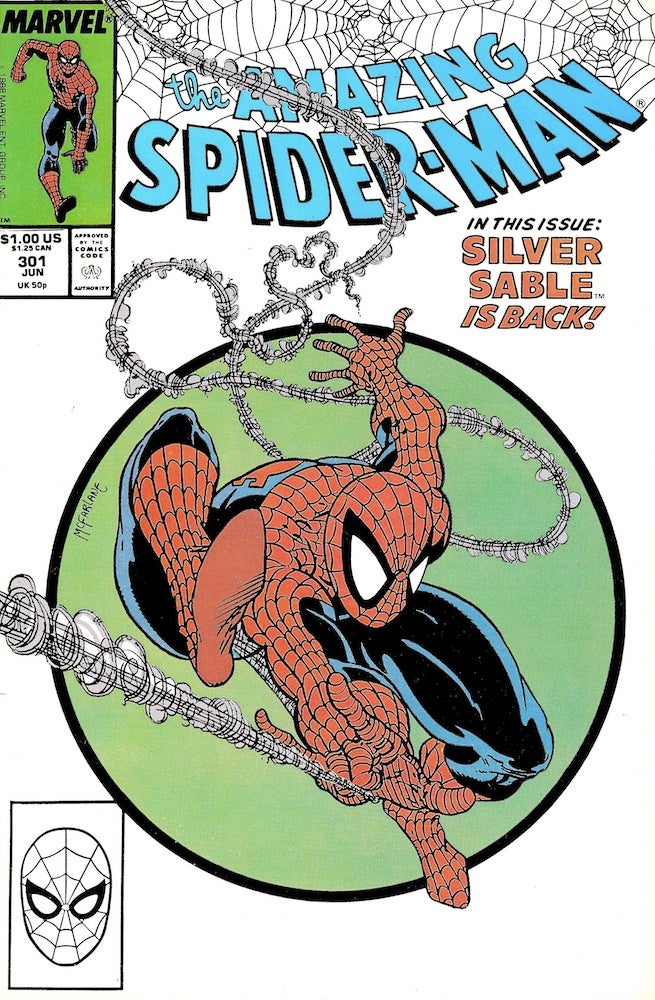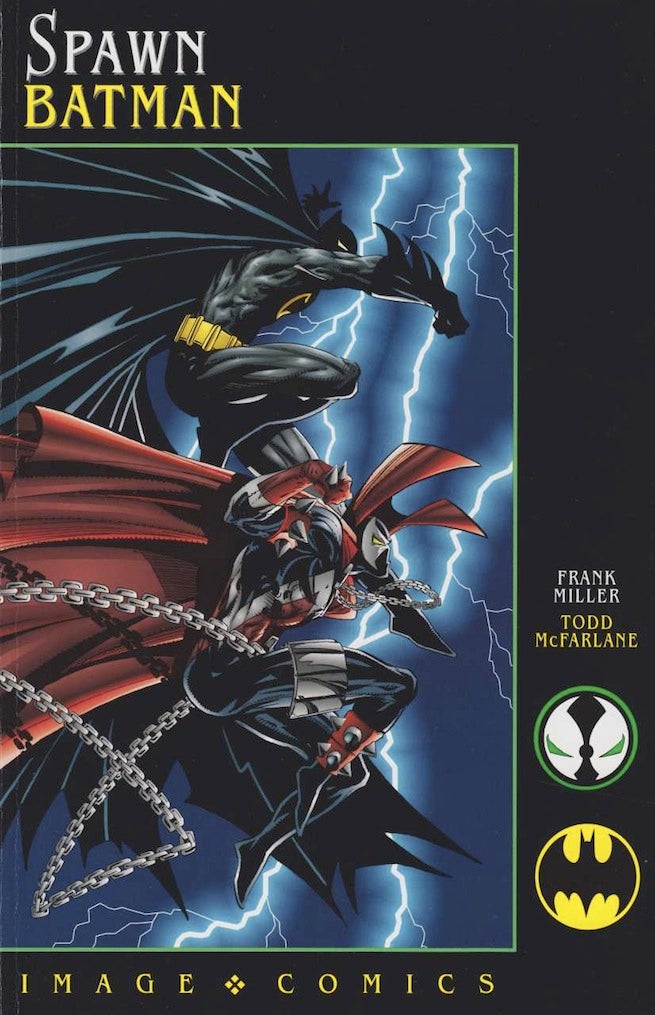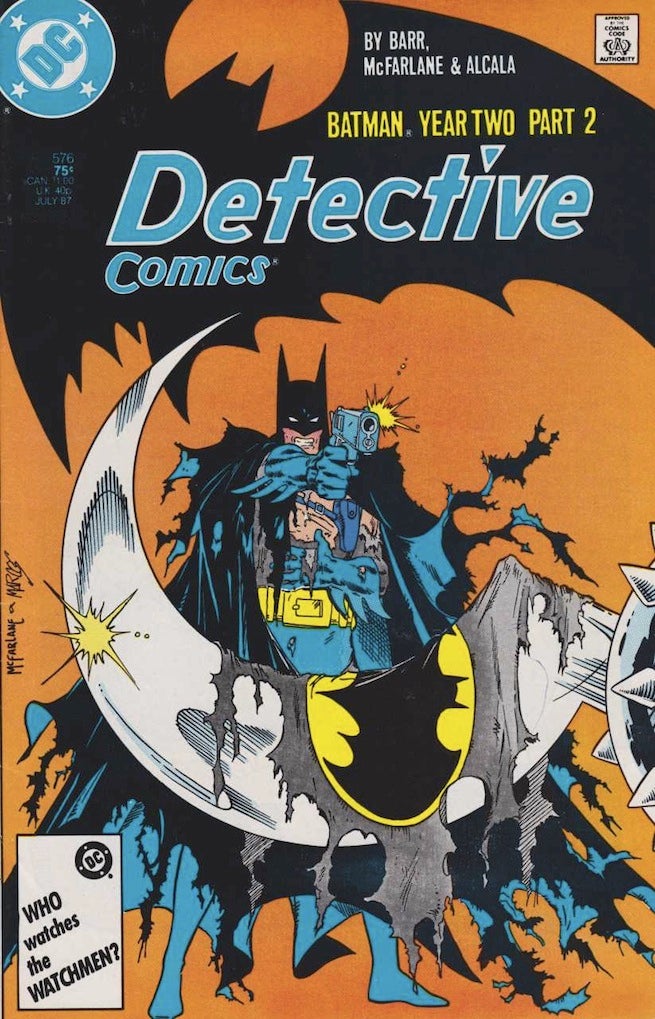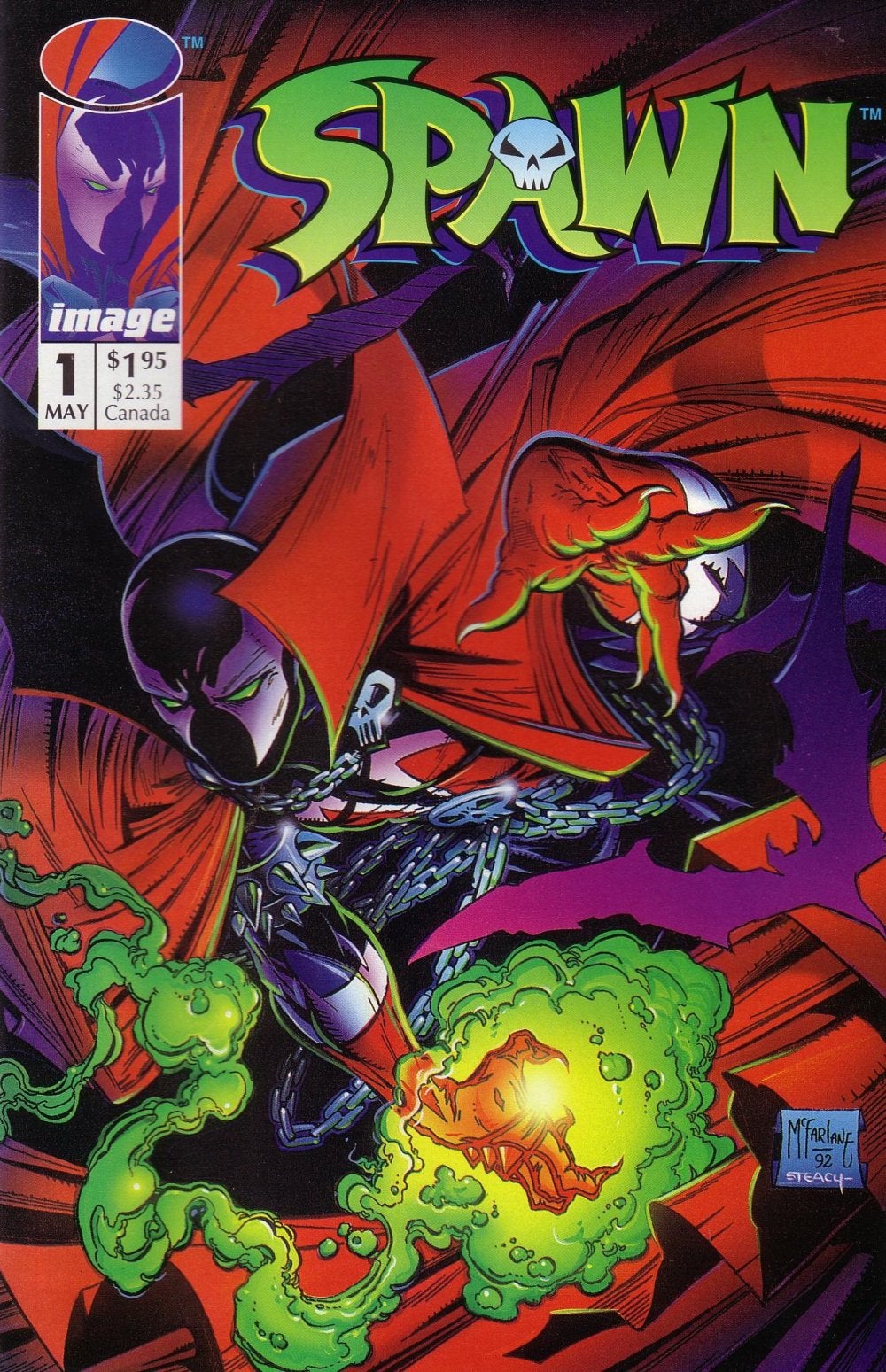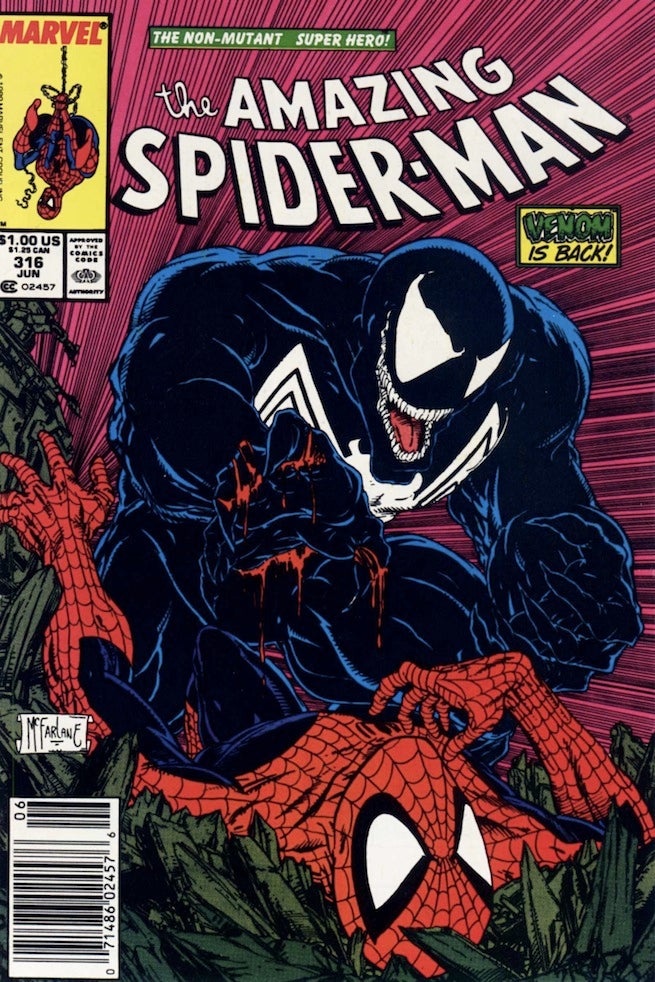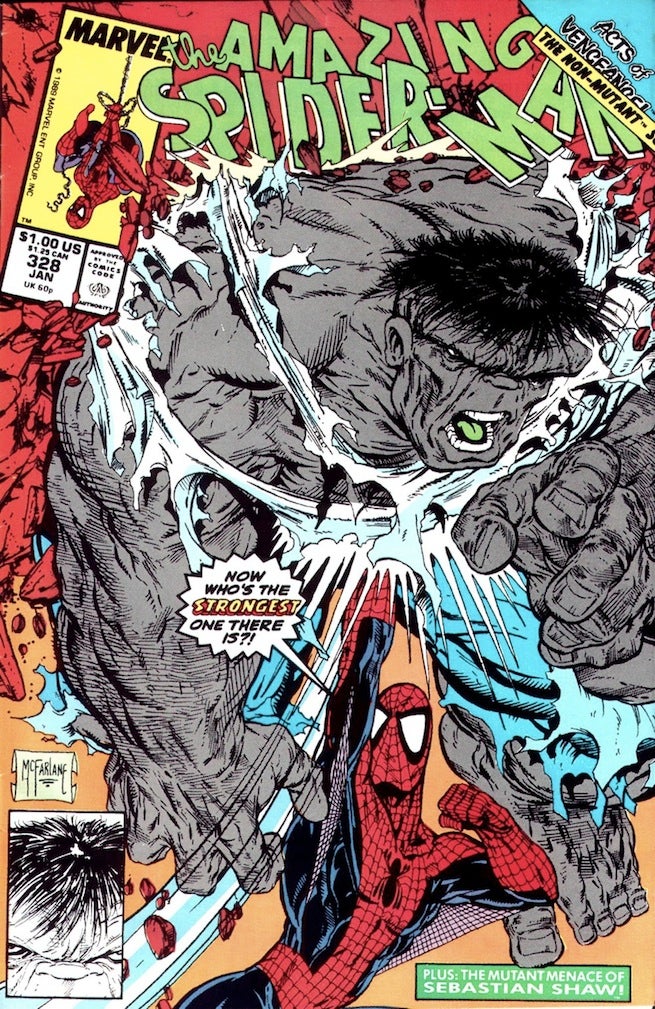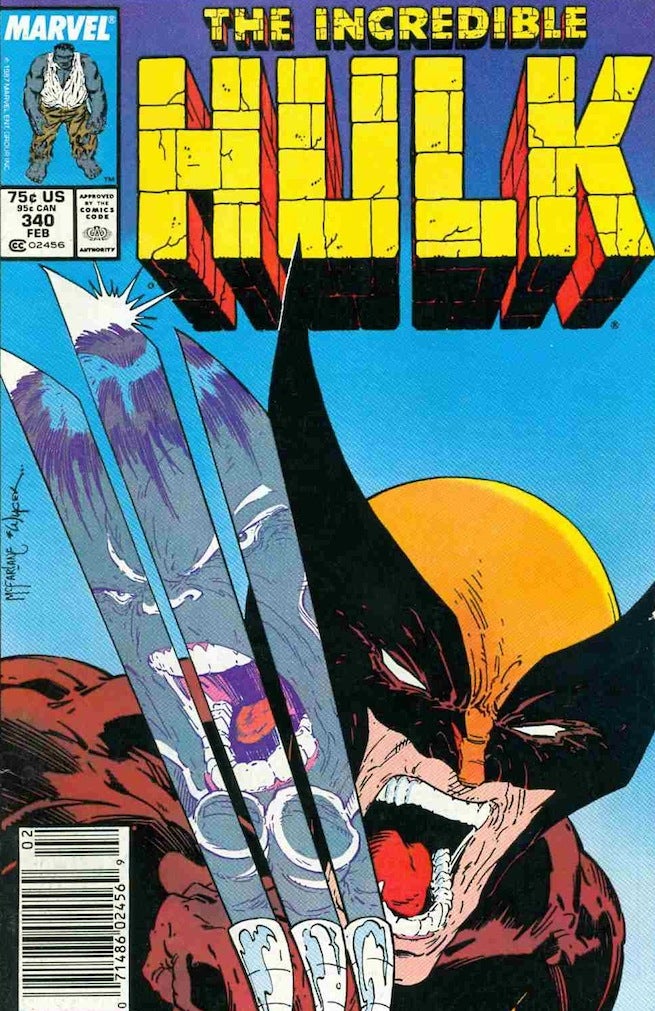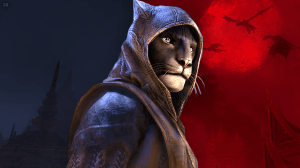Spawn released its landmark 250th issue this week, making it one of the longest continually-running creator-owned series in industry history. Created by superstar artist Todd McFarlane, Spawn was one of the core series that was a part of the “Image Revolution” of 1992, when McFarlane, Rod Liefeld, Jim Lee, Erik Larsen, and other artists broke away from the “Big Two” publishers and launched their own company to focus on creator-owned work.
Videos by ComicBook.com
McFarlane has said that he feels like a “proud papa” watching Spawn hit this huge milestone, so to celebrate the comic and the creator’s career, we thought we’d rank the 10 greatest, most dynamic McFarlane covers of all time.
10. Amazing Spider-Man #301
It takes a certain amount of hutzpah for an artist to quote his own work, but that’s exactly what McFarlane does here on the cover of Amazing Spider-Man #301 – an obvious homage to the cover that came exactly one issue prior, Amazing Spider-Man #300 (more on that in a bit). Of course, the big difference with ASM #301 is that Spider-Man is back in his traditional red and blues, signaling the start of a “new era” of Spidey comics. But on a broader, industry-wide level, the cover to ASM #301 features an element of promoting the artist as the star of the comic – why else would it sport nearly an identical image to a comic that was only released a month earlier? The “artist as the star” message would go on to catalyze the “Image Revolution” movement a few years later where A-list artists like McFarlane, Rob Liefeld and Jim Lee took off to form their own company and their books sold primarily because of how much everyone loved their art.
9. Spawn/Batman #1
By 1994, McFarlane was so successful, he was able to do pretty much whatever he wanted, whenever he wanted. So he took his ultra-popular Image Comics creation, Spawn, and collaborated with industry icon Frank Miller to create this inter-company crossover, Spawn/Batman. The comic was promoted as a “companion piece” to Miller’s legendary The Dark Knight Returns, and McFarlane’s cover – which shows Batman and Spawn flying across a lighting-filled sky – is a clear homage to TDKR. It also demonstrates a true arc to McFarlane’s career, who prior to becoming an industry superstar, illustrated three issues of the “Batman: Year Two” story in Detective Comics (more on that in a second), the sequel/companion to Miller’s origin retelling, “Batman: Year One.”
8. Detective Comics #576
It what was his first ever cover featuring the enduring icon Batman, McFarlane got to show off some of his more unique qualities and sensibilities that would go on to become some of his better known artistic trademarks. The most notable McFarlane-ism on display is his use of perspective. Look how Batman’s figure is technically in the background while the scythe weapon of the comic’s villain, the Reaper, is the most prominent visual in the image’s foreground. Adding to the cover’s curiosity is how the scythe has a piece of Batman’s costume (featuring the iconic “Bat-signal”) hanging over it, suggesting that the reader is witnessing the mid-point of a very brutal battle between Batman and Reaper. This is bonafide storytelling on display, begging the reader to check out the story inside.
7. Amazing Spider-Man #313
One could probably dedicate an entire list of great McFarlane covers from his run on Amazing Spider-Man in the late 1980s, but ASM #313 stands out above the fray for its visualization of longtime Spidey rogue, the Lizard, as well as (similar to Detective #576) how it plays with the viewer’s perspective of the battle. Simply put, the Lizard – always portrayed as a Jekyll/Hyde monster character – has never looked more terrifying and dangerous as he does on the cover to ASM #313. His razor-sharp teeth are flared and his saliva dripping, while a splatter of blood can be found on Spider-Man’s mouth and chin. Adding to this cover’s legacy is the fact that in 2010, original artwork of the image was auctioned off for more than $71,000 – showing just how in-demand McFarlane’s artwork was, despite only creating the image about 20 years earlier.
6. Spawn #1
If there was any question as to who was the top dog of the Image Revolution, the smashing success of Spawn #1 puts that debate to rest. The comic sold more than 1.7 million copies, without the aid of gimmicky polybags, foil, variants or trading card inserts. People went out and bought this book primarily because it was a Todd McFarlane comic – and greeting those readers on the front cover is a visual of Spawn that would go on to be one the more enduring images of the character in its 20-plus year history. In many ways, Spawn #1’s cover image is quite similar in terms of physicality and dynamism as one of McFarlane’s trademark Spider-Man covers – just swap out the “spaghetti webbing” with a chain and a puff of mystical green smoke.
5. Amazing Spider-Man #316
If there’s one Spider-Man character that will forever be linked to McFarlane, it’s the monstrous villain Venom – the “yang” to Spider-Man’s “ying””and the possessor of the murderous alien symbiote costume. Venom quickly became a phenomenon after his first full appearance in Amazing Spider-Man #300, so it was no surprise when less than a year later, the character was reintroduced for a new arc. ASM #316 marks the very first time Venom appeared (in full) on a comic book cover, and the visual McFarlane illustrated couldn’t have been any better for the villain’s legacy. Similar to how threatening he made the Lizard in ASM #313 (see No. 7), Venom is shown flat-out dominating the hero, standing over him and ripping his costume to shreds. It’s iconic images like these that transformed Venom from your run-of-the-mill crazy into a fan favorite anti-hero.
4. Amazing Spider-Man #328
In his final hurrah illustrating Amazing Spider-Man (before he left to write/illustrate his own Spider-Man series because he was reportedly bored/frustrated with having to pencil somebody else’s story), McFarlane gave readers this banner-breaking image of a cosmically-powered Spider-Man smashing the Hulk through the iconic Amazing Spider-Man logo on the top of the page. For people who deride the 90s for how its character were unrealistically depicted with oversized muscles on top of muscles … well, then this cover is not for you. For everyone else who appreciates the spirit of reckless abandon that emanates from many 90s comics, the ASM #328 cover is a steroid-fueled fantasy of epic proportions. What’s not to love about two superhero legends pounding each other so viciously that the banner/logo of the comic shatters from the impact?
3. Spider-Man #1
Whether you got it in silver, gold or platinum (or were one of the unfortunate noobs who paid extra for a printer error promoted as a “blue lizard variant”) McFarlane’s Spider-Man #1 cover (a comic he both scripted and illustrated) is easily one of the most famous comics of the 1990s. In addition to it featuring yet another signature McFarlane Spider-Man pose, its release in mid-1990 single-handedly ushered in the era of multiple variant covers to help drive up sales – a trend that is still going strong today based on the popularity of such recent releases as Star Wars #1 and Amazing Spider-Man (vol. 3) #1. At more than 2.5 million copies sold, Spider-Man #1 was briefly the greatest selling comic book of all time before it was overtaken by such 1990s phenoms as X-Men #1 and X-Force #1.
2. Incredible Hulk #340
As if a Hulk vs. Wolverine showdown needed any more hype, this visually arresting cover from McFarlane’s late 80s run with Peter David might be one of the most iconic images produced before the comic book industry formally gave way to the “Chromium Age” in the early 90s. Part of what makes this image so special is how McFarlane plays with the viewer’s point of focus. It’s a Hulk comic, but the most visually pronounced character on the front is a screaming, ready-for-battle Wolverine. But if the viewer’s eye turns to Wolverine’s adamantium claws, he’ll see a reflection of the Hulk, who is also clearly ready to throw down with the diminutive Canucklehead.
This comic was released a few months before McFarlane officially signed on for his groundbreaking run penciling Amazing Spider-Man. There’s no doubt that this ingenious cover was the one that caught everyone’s attention at Marvel, signaling that McFarlane was ready for the big time.
1. Amazing Spider-Man #300
Arguably McFarlane’s most famous cover, created while the artist was at the apex of his popularity, the front to Amazing Spider-Man #300 features pretty much everything you would expect from a splashy Spider-Man cover illustrated during McFarlane’s career-defining run. There’s the main image of Spidey contorting his body beyond the previously accepted bounds of human anatomy (but the illustration looks so cool, who cares how unrealistic it is). And then there’s McFarlane’s vintage “spaghetti webbing” – look at how the webbing twists and turns around itself in order to create Spider-Man’s web line. It’s just webbing, but “spaghetti webbing” was considered so mind-blowing to McFarlane’s editors and collaborators that people are still talking about it nearly 30 years after the fact.

